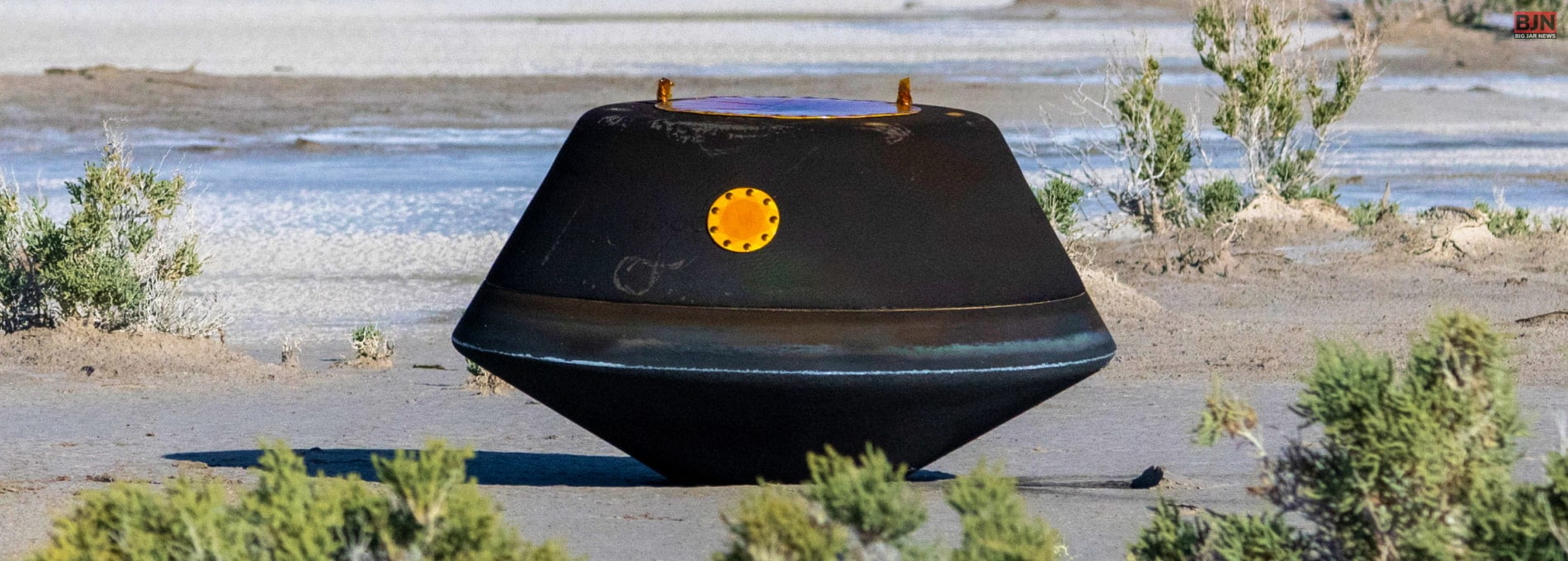A NASA Spacecraft Lands On The Surface Of Utah With Its First Asteroid Chunks

Table Of Contents
A recovery crew inspects the asteroid sample, which might reveal the solar system’s birth into Earth’s atmosphere.
The parachute-assisted capsule touchdown in Utah to warp up and reveal the dramatic seven-year and four-billion mile voyage. The capsule is a 31-inch wide sample of a 110-pound weight return capsule. It is loaded with a half-pound of soil and rocks from an asteroid known as Bennu.
A lot of scientists and engineers are holding their collective breath. This similar capsule crash landed on Utah’s surface in 2004 when this parachute assisted failed to open. This was expected to deploy stabilizing a drogue parachute at a high altitude of 21 miles.
The capsule is a 24-foot wide main parachute unfurled 20,000 feet to 15,000 feet higher than expected. It may have contributed to a slightly earlier-than-expected touchdown. But the main chute worked flawlessly to the lower sample return capsule to the gentle 11 mph landing at 10:52 A.M. An investigator of this mission named Dante Lauretta says, “I was getting a little worried for sure.” This investigator has been working on the project for NASA for about 20 years. He further stated at a news conference, “And then we heard the main shoot detected, and I literally broke into tears. I’m probably gonna do it right now just thinking about it. Because that was the moment I knew we made it home.”
Learn More About:
You May Also Like

December 5, 2023
Spotify Will Fire Around 1500 Employees During Its Third Layoff

December 28, 2023























